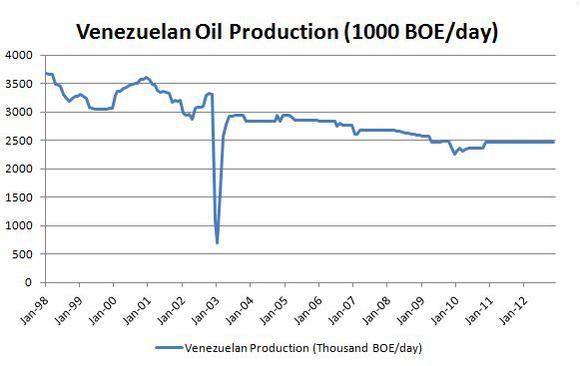Ford's Profits in Latin America Wiped Out as Venezuela Devalues Currency by 44%
Ford Motor Company assembly plant in Valencia, Venezuela.
Ford Motor Company announced last week that instead of making money in Latin America this year, it will likely lose $350 million in the region because the government of Venezuela devalued its currency, the bolivar, by 44%. Ford is currently holding more than $700 million in bolivars that it cannot exchange or repatriate. The Venezuelan government is trying to conserve its hard currency reserves and it will not give Ford dollars for bolivars. FoMoCo, which has built vehicles in Venezuela since 1962 and currently operates an assembly plant in Valencia, really doesn’t have any options other than to write down the loss. The car company can’t very well try to exchange currency on the black market. Other international companies, including Toyota, face similar situations with their operations in Venezuela.
The 44% devaluation in the bolivar is the second this year, following a 32% devaluation in February. Currency controls in place for the last decade have made dollars scarce in Venezuela. Foreign reserves were reported to be at a nine year low this month. With a weak domestic currency and shrinking reserves of hard foreign currencies, companies in Venezuela have had a difficult time arranging imports, resulting in shortages of imported good ranging from meat to tires.
One reason analysts give for Venezuela’s currency issues has been growing government deficits. Government revenues from exporting oil have gone down as the country’s oil fields experience natural decline. The deficits are exacerbated by the government subsidizing the price of gasoline so consumers only pay about 5 cents per gallon, a subsidy that is reported to be phased out to bring the price up to about $1.60/gallon..
More by TTAC Staff
Latest Car Reviews
Read moreLatest Product Reviews
Read moreRecent Comments
- Kwik_Shift_Pro4X Neither. They're basically the same vehicle.
- Analoggrotto 1. Kia Sportage2. Hyundai TucsonRugged SUVs which cater to the needs of the affluent middle class suburbanite which are second only to themselves, these are shining applications of Hyundai Kia Genesis commitment to automotive excellence. Evolving from the fabled Hyundai Excel of the 90s, a pioneering vehicle which rivaled then upstart Lexus in quality, comfort and features long before Hyundai became a towering king of analytics and funding legions of internet keyboard warriors.
- FreedMike Comparison: RAV4 versus CR-V. Who wins? Mazda CX-5 Turbo.(Sorry, the Toyota and Honda are both deadly dull to drive.)
- Ajla 1. RAV4 Hybrid2. CRV Hybrid 3. RAV4 2.54. RAV4 Prime5. CRV 1.5T
- MaintenanceCosts If only it had a hatch. The Model S is so much more practical, has similar performance in non-Plaid form, and is $20k more - and the $20k premium seems almost worth it just for the hatch.




































Comments
Join the conversation
Venezuela is not all of Latin America. It isn't even close to the largest country in Latin America, or even just South America. The big problem countries in South America are Venezuela and Argentina, two countries that have a long history of repeatedly squandering their national wealth and that of their citizens. Economic and political stability is hard, and though others in the region have had their problems, those two are the worst offenders, and represent risks that are excessive, though Peru and Bolivia are getting close. Ford would be better off getting out of Venezuela and spreading its investment primarily to Brazil, Colombia and Chile, countries with reasonable stability and markets representing two-thirds of South America's population.
Communism was just a red herring.